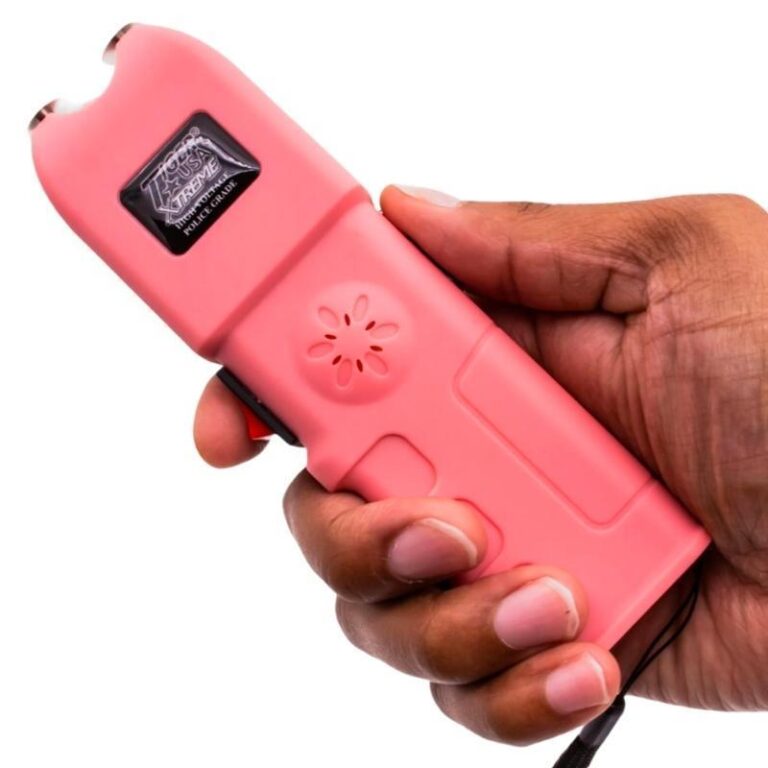Table of Contents
- Understanding Eligibility Requirements for a Stun Gun Concealed Carry Permit
- Step-by-Step Application Process Explained
- Essential Documentation and Fees You Need to Prepare
- Tips for Successfully Navigating Background Checks and Interviews
- To Wrap It Up
Understanding Eligibility Requirements for a Stun Gun Concealed Carry Permit
Before applying for a permit to carry a stun gun concealed, it’s essential to ensure you meet all the necessary legal criteria set forth by your state or local jurisdiction. Eligibility is not just about age or residency; it often involves a thorough background check, verification of no felony convictions, and sometimes proof of residency. Many states require applicants to be a minimum age, typically 18 or 21, and to pass both a criminal history check and sometimes a mental health evaluation to guarantee responsible ownership.
Key factors to consider include:
- Your criminal and mental health history, as any red flags might result in denial.
- Proof of legal residency, since many jurisdictions require applicants to live within their boundaries.
- Compliance with state-specific restrictions, such as limitations on stun gun models or ammunition.
- Completion of mandatory firearms or self-defense training courses when applicable.
Step-by-Step Application Process Explained
Obtaining a stun gun concealed carry permit starts with thoroughly researching your local and state regulations, as requirements can vary widely. Once you have confirmed your eligibility, gather all necessary documents such as identification, proof of residency, and any relevant training certificates. Many jurisdictions require applicants to complete a safety course, which often covers legal responsibilities and proper handling techniques. Submitting a completed application form along with the requisite fees to the designated authority, such as your local police department or sheriff’s office, is the next step. Don’t forget to double-check that every section of the form is correctly filled to avoid processing delays.
After submission, you may be required to attend an in-person interview or a background check appointment. Be prepared to provide fingerprints and answer questions related to your application and intent for carrying a stun gun. The processing time can vary, so it’s wise to keep a copy of your application and any receipts for your records. Upon approval, your permit will either be mailed to you or made available for pickup. To stay compliant, familiarize yourself with ongoing renewal requirements and concealed carry laws to ensure your permit remains valid and you stay informed on any legal updates.
- Check local laws and eligibility criteria.
- Complete necessary safety training.
- Submit a detailed and accurate application.
- Attend interviews and background checks.
- Keep track of your permit’s expiration and renewal process.
Essential Documentation and Fees You Need to Prepare
Before submitting your application, it’s crucial to gather all necessary paperwork to ensure a smooth process. Typically, you will need to provide proof of residency, such as a utility bill or lease agreement, along with a valid government-issued ID like a driver’s license. Some jurisdictions may also require a recent photograph and proof of completion of a stun gun safety training or certification course. It’s always a good idea to check with your local licensing authority to confirm any specific documents they mandate, as requirements can vary widely.
On the financial side, applicants should be prepared for a range of fees associated with the permit application. These fees often include an application processing charge, background check fees, and a permit issuance fee. In many areas, the total cost can range anywhere from $50 to over $150, and some places may charge an additional fee for fingerprinting services. Budgeting for these expenses upfront will help avoid unexpected delays and ensure that your application moves forward without unnecessary hurdles.
Tips for Successfully Navigating Background Checks and Interviews
When preparing for the background check and interview stage of your stun gun concealed carry permit application, it’s essential to approach the process with transparency and confidence. Ensure all paperwork is thorough and accurate-missing or incorrect information can delay your application or raise red flags. Review your personal history carefully and be ready to explain any incidents or discrepancies honestly. Gathering character references and proof of residency ahead of time can expedite the verification process. Remember, the goal is to demonstrate your responsibility and suitability for carrying a stun gun in public.
During the interview, presenting yourself professionally will create a positive impression. Dress neatly, speak clearly, and maintain a respectful tone. Here are some practical pointers to keep in mind:
- Be prepared to discuss why you want the permit and how you plan to use it responsibly.
- Stay calm and answer questions truthfully without volunteering unnecessary details.
- Understand your local laws and regulations regarding stun guns to demonstrate your knowledge.
- Bring copies of all relevant documents, including any training certificates or previous permits.
To Wrap It Up
Applying for a stun gun concealed carry permit may seem daunting at first, but with the right information and preparation, the process becomes much more manageable. By understanding the specific requirements in your jurisdiction, gathering the necessary documentation, and following the proper application steps, you can confidently move forward in obtaining your permit. Remember, staying informed about local laws and responsible usage is just as important as the application itself. We hope this guide has provided you with a clear roadmap to help you navigate the process smoothly and safely. Stay prepared, stay protected!Check Our Other Blogs
- StunGun – Your Trusted Source for Stun Guns, Laws, and Self-Defense Tips
- PepperSprayLaws – Your Trusted Resource for Pepper Spray Information
- StunGunLaws – Your Trusted Guide to Stun Gun Legality and Safety





